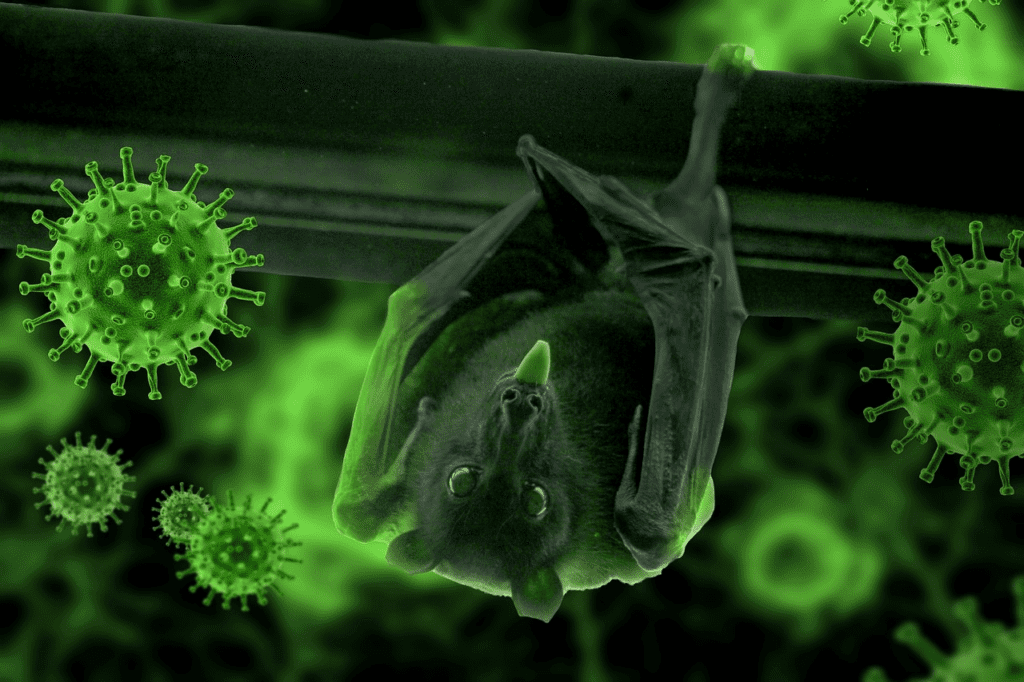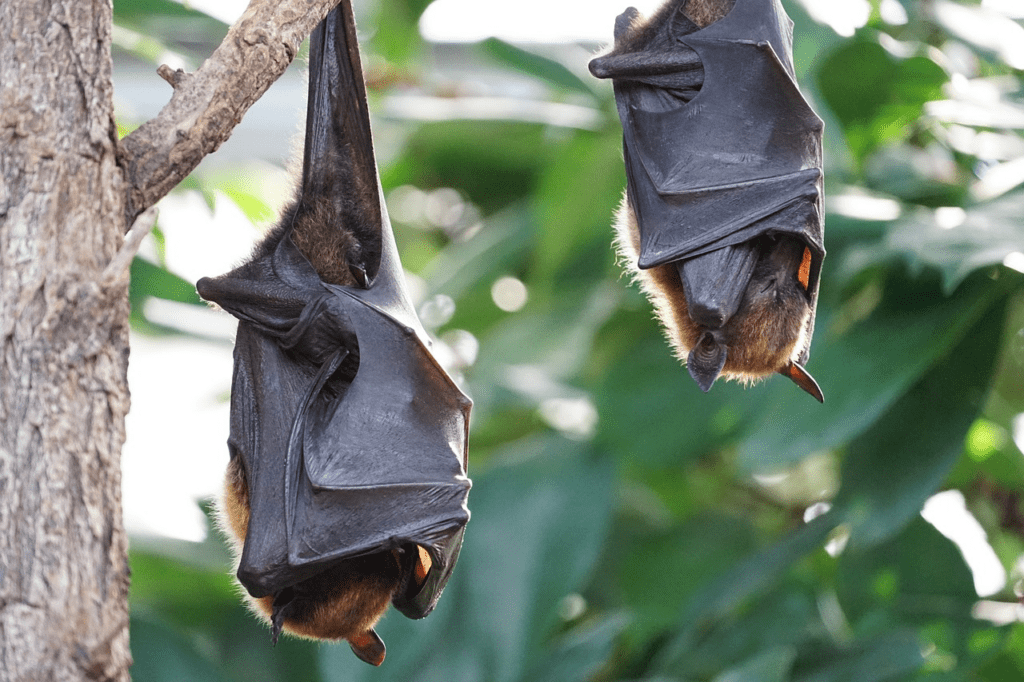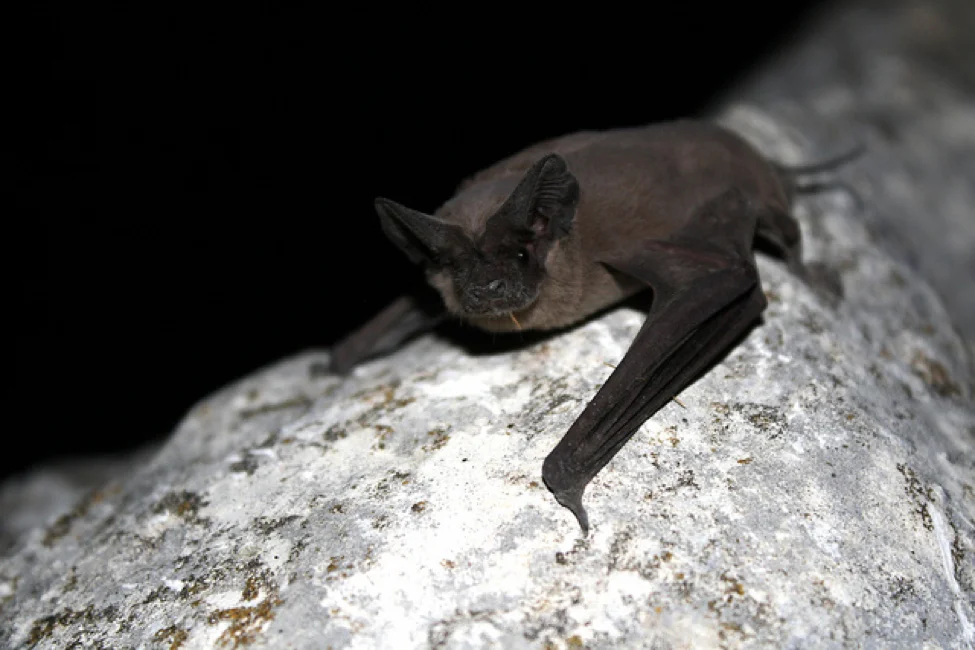
Bats, those enigmatic creatures of the night, have long captured our imagination. With their delicate wings, radar-like echolocation, and mysterious nocturnal habits, bats are both fascinating and crucial to our world. But did you know that these winged wonders also play a pivotal role in our ecosystems, making them an irreplaceable piece of the natural puzzle?
Now, while bat species have garnered their fair share of myths and legends, they're also in the spotlight for something rather less glamorous: zoonotic diseases. Zoonotic diseases are those that can leap from animals to humans, and bats are known to harbor quite a few of these potentially dangerous pathogens.
But fret not, we're here to demystify these bat viruses and diseases, explore their origins, and uncover the critical balance between bat species conservation and public health. Join our Critter Stop team on this journey of knowledge and bat-information!
First things first, what exactly are zoonotic diseases? In simple terms, they are infections emerging viruses that can be transmitted between animals and humans. These sneaky viral pathogens can jump the species barrier and wreak havoc in both animal and human populations.
The leap bat diseases from animals to humans, known as zoonotic spillover, is a complex process influenced by human interactions with a myriad of factors. Understanding this phenomenon is critical to preventing future pandemics and safeguarding public health. Let's delve into the fascinating world of cross-species transmission and explore how factors like wildlife trade, habitat destruction, and human behavior play a pivotal role in the spread of these diseases.
Understanding how these factors interact and contribute to zoonotic spillover is essential for preventing future outbreaks. It highlights the need for a holistic One Health approach, which recognizes the interconnectedness of human, animal, and environmental health. By addressing the complex web of factors that drive zoonotic transmission, we can reduce the risk of pandemics and protect both human and animal populations.
Here we go with some of the most common diseases that a bat can transmit to humans:
1.- Rabies
2.- Ebola Virus Disease
3.- Nipah and Hendra Virus Infections
4.- SARS (Severe Acute Respiratory Syndrome)
5.- Histoplasmosis (caused by a fungus rather than a virus)

Rabies, often associated with fear and dread, is a viral disease caused by the rabies virus also known as lagos bat virus. Its symptoms, transmission methods, and the unfortunate connection between bats species and human patients with rabies are worth understanding to ensure our safety.
Rabies presents itself in two distinct stages:
1. Prodromal Stage: This initial phase, lasting a few days, is often characterized by flu-like symptoms, including fever, headache, and general discomfort. The distinctive feature is tingling or twitching at the site of the animal bite.
2. Furious or Paralytic Stage: After the prodromal stage, rabies symptoms intensify. Two common forms emerge:
Rabies is primarily transmitted through the saliva of infected animals, most commonly via an animal biting someone. However, transmission can also occur through open wounds or mucous membranes coming into contact with infected saliva. Notably, rabies is not transmitted through casual contact with imported bats, such as touching an infected animal's fur or being near bats without direct exposure to bat urine.
Contrary to popular belief, bats are not the primary villains when the bat to human transmission when it comes to rabies viral transmission. While bats can carry the rabies virus, their role in spreading it is often misunderstood.
While rabies is a deadly disease, it is also entirely preventable. Here's what you need to know:
As you see, the question do bats carry rabies? Has been answered. While rabies is a terrifying disease, understanding its symptoms, transmission methods, and the role of bats in rabies transmission can dispel misconceptions about endemic disease and promote responsible behavior around wildlife. By prioritizing prevention, vaccination, and timely medical care in cases of potential exposure, we can ensure that rabies remains a rare and preventable threat to human health.
Alright, let's demystify histoplasmosis, a fungal condition you might not have heard of. This sneaky fungus, Histoplasma capsulatum, loves to hang out in places with lots of bird or bat droppings. Picture old caves, attics, or spots where bats do their business.
Now, here's the bat twist! Histoplasmosis gets linked to bats because of their droppings. When bats take over a cave or attic, their droppings pile up over time. Guess what happens then? The fungus Histoplasma capsulatum throws a spore party in the bat guano there, and those spores can become airborne.
So, what happens if you accidentally crash this fungal spore party?
Well, they can vary. Some folks might barely notice, while others might experience fever, cough, chest pain, and feeling tired and achy all over. If things get really wild, the infection can spread and cause more severe symptoms.
If the fungal spore party gets out of hand, don't fret. There are antifungal medications that can kick those spores to the curb. The specific meds and how long you'll need them depend on how wild the party got and how healthy you are.
Now, let's talk prevention in a bat-rich world:
Get Your Bat Gear On: If you're headed into caves or other species of guano-prone areas, it's time for your party gear! Mask up, glove up, and shield those peepers to keep those spores at bay.
Let Fresh Air In: If you're exploring bat-infested indoor spots, don't forget to crack open a window. Good ventilation can help scatter those spores and make your risk of exposure to bat disease drop faster than a mic.
Hands, Clothes, Repeat: After your adventure, wash up and change clothes to get rid of any lingering spores. Think of it as your post-party cleanup routine.
Respect the Bat Caves: Try not to disturb bat hangouts or guano-packed caves. You don't want to be the one who accidentally sends spores into the air, right?
See a Doc If Needed: If you start feeling under the weather after a bat adventure, don't wait! See a healthcare pro pronto. Early treatment can keep that fungal spore party from getting out of control.
So, there you have it, the lowdown on histoplasmosis and how to stay safe around bats. Remember, bats are pretty cool creatures, and with a little know-how, you can enjoy their company without crashing any fungal spore parties!
Hold onto your seats; we're diving into the spine-tingling world of Nipah and Hendra viruses. If you think these sound like something out of a sci-fi thriller, you're not alone. But sadly, they're very real. Let's start by getting the lowdown on these deadly diseases and their connection to bats.
Imagine a virus that can cause severe respiratory and neurological symptoms. That's Nipah virus, a pathogen with a startlingly high mortality rate. It was first identified in Malaysia in the late '90s when it caused a deadly outbreak among pig farmers and those who had close contact with pigs.
But here's the chilling part: bats, specifically fruit bats, are believed to be the natural reservoir hosts of this virus. When the virus spills over from infected bats to infect humans too, it can lead to outbreaks with devastating consequences.
Now, let's talk about Hendra virus, another viral nightmare. It's known for causing a severe respiratory illness in both horses and humans. Hendra was first identified in Australia in 1994 and has since cropped up sporadically.
Just like Nipah, the culprit here seems to be bats, with flying foxes being the primary suspects. Horses usually get infected first, and then it can jump to humans, leading to a deadly game of viral hot potato.
Now, let's unveil the cloak of mystery around how bats are involved in the transmission of Nipah and Hendra, viruses related to human infections. These winged creatures aren't the villains; they're more like unwitting carriers emerging infectious diseases.
You see, bats, especially fruit bats, can carry these viruses in their saliva and urine. When they chow down on fruits and nectar, they may leave traces of the virus behind. If a horse or a human comes into direct contact with these contaminated materials, that's when the trouble begins.
But here's the crucial part: bats themselves often don't get sick from these viruses. They're more like silent carriers, which makes it even trickier to track and prevent outbreaks. So, while bats are key players in this viral drama, they're not the villains—they're just doing their bat thing.
Now that you know the cast of characters and their roles, let's get into the nitty-gritty:
Nipah and Hendra viruses are no walk in the park. Symptoms can range from fever and headache to severe respiratory distress and neurological problems. Early detection is crucial for a chance at survival.
Treatment options are limited, which is why prevention is key. There's no specific antiviral medication, so supportive care is the mainstay of treatment. That's why understanding the importance of prevention is absolutely critical.
Preventing Nipah and Hendra virus outbreaks comes down to some straightforward (but not always easy) steps:
So, there you have it—the thrilling tale of Nipah and Hendra viruses and their connection to bats. Knowledge is your superpower when it comes to staying safe from these viral villains, and it all begins with understanding how bats unwittingly play a role in this viral drama.

It's the early 2000s, and a global health crisis is unfolding. People are falling seriously ill, and a mysterious respiratory illness is spreading like wildfire. That's the backdrop of the Severe Acute Respiratory Syndrome (SARS) outbreak. It was like a plot from a suspenseful thriller. But did you know that bats might hold the key to unraveling this mysterious human disease too?
Now, let's get into the heart of the matter—the research findings that have stirred both controversy and enlightenment. These findings point to a striking connection between SARS and bats that challenges our understanding of the disease.
The SARS outbreak left the world in shock, but it also triggered a scientific quest to trace the origins of the virus. Researchers embarked on a journey to unravel the mystery, and here's what they found:
Now, fast forward several or several bat species over to the present, where the world grapples with the COVID-19 pandemic. The importance of comprehending the connection between bats and diseases like SARS has never been more apparent. Here's why this knowledge is a game-changer for future pandemic preparedness:
The link between bats and diseases like SARS is a story of intrigue, complexity, and caution. It's a story that continues to unfold as we navigate the challenges of our ever-changing world. By understanding this connection, we can better prepare for and prevent future pandemics, ensuring a healthier and safer future for all.
Say the word "Ebola," and it sends shivers down your spine. It's a name for bat disease that strikes fear into hearts around the world. But what exactly is this deadly virus, and what's the deal with fruit bats?
Ebola virus disease, or simply Ebola, is a highly contagious and often fatal illness in humans. The virus is named after the Ebola River in the Democratic Republic of Congo, where it was first identified in 1976 during two simultaneous outbreaks. Ebola is notorious for causing severe hemorrhagic fever, with symptoms ranging from fever and fatigue to internal and external bleeding. It's a devastating disease with a high mortality rate.
Now, let's get to the heart of the matter: are fruit bats the culprits behind Ebola outbreaks? It's a question that has puzzled scientists and the public alike.
Fruit bats, also known as flying foxes, are suspected to be natural hosts of the Ebola virus. These bats are found in various parts of Africa, including regions where several species of Ebola outbreaks have occurred. But here's the twist – while fruit bats may carry the virus, they don't seem to get sick from it.
Pinpointing the exact source of Ebola has been a formidable challenge. It's believed that the virus can spill over from bats to other animals, which may then transmit it to humans. This makes it difficult to trace the origin of outbreaks.
One possible route of transmission is through the consumption of bushmeat, which includes wild animals hunted for food. In some regions, people may come into contact with animals that have been infected with the virus.
Understanding the potential link between fruit bats and Ebola is vital not only for public health but also for conservation efforts. Fruit bats play crucial roles in ecosystems, such as pollinating plants and dispersing seeds. Striking a balance between protecting these animals and preventing disease transmission is a delicate task.
The connection between fruit bats and Ebola is a complex and ongoing mystery. While fruit bats may be carriers of the virus, many factors contribute to its transmission to humans. By unraveling this mystery and adopting responsible practices in wildlife interaction and consumption isolated from bats, we can strive to prevent future Ebola outbreaks while preserving the important role of fruit bat habitat and bats in our ecosystems.
Let's get one thing crystal clear from the start – never, ever handle bats! It might seem like common sense, but we're going to drive this point home because it's a big, bold NO.
Bats are not pets, and they're not domestic animals meant to be cuddled or kept as companions. Handling bats, especially in the wild, is a strict no-no. Here's why:
Now, let's talk about the silver lining – some diseases have vaccines! These vaccines can be your shield of protection. We'll discuss the vaccines and protective measures that can help keep you safe.
For diseases like rabies, vaccines are available. If you work in professions that put you at risk of exposure, such as healthcare or wildlife conservation, getting vaccinated is a smart move.
Prevention is often the best cure. Here are some protective measures to keep in mind:
For all you travelers and adventure seekers out there, listen up! We'll explore responsible tourism and caving practices that ensure both your safety and the welfare of bat species.
When visiting caves or bat habitats, follow these guidelines:
If you're a caver, remember these practices:
Before we cast bats as villains, let's remember their incredible ecological significance. Bats are nature's pest controllers. They dine on insects that harm crops and spread diseases, making them invaluable contributors to our ecosystems.
While fear might tempt us to eliminate bats from the equation, we'll explain why such extreme measures would do more harm than good. Eradicating bats would disrupt ecosystems and could lead to a rise in insect pests, ultimately harming agriculture and human well-being.
The key lies in finding a harmonious balance between human health and bat conservation. We'll discuss ways to coexist peacefully with these remarkable creatures:

Prevention and risk reduction for bat diseases can go hand in hand with responsible behavior and conservation efforts for wild bats. By respecting bats, safeguarding your health, and supporting their conservation, we can find a way to peacefully coexist with these remarkable creatures and ensure a healthier planet for all.
In our journey through the mysterious world of bats and zoonotic viruses diseases, we've uncovered the facts, debunked the myths, and explored the complex relationship between these creatures' natural hosts, and were able to know what diseases do bats carry.
As we conclude, to avoid diseases carried by bats it's important to remember that knowledge is your best defense. By understanding and respecting bats and their vital place in our world, we can ensure a healthier and more balanced coexistence. So, let's celebrate the winged wonders and ensure they continue to enchant our nights without posing a threat to our health.
Thanks for joining Critter’s Stop team through this bat-world. We hope that with all this information, you can understand better the real implications of bats in some diseases, and be able to identify symptoms, methods of prevention, and what to do in case of risk. If you wanna talk with us, call us (214) 234-2616 and we will be happy to hear you.
Visit our Critter Library and learn more about our furry friends